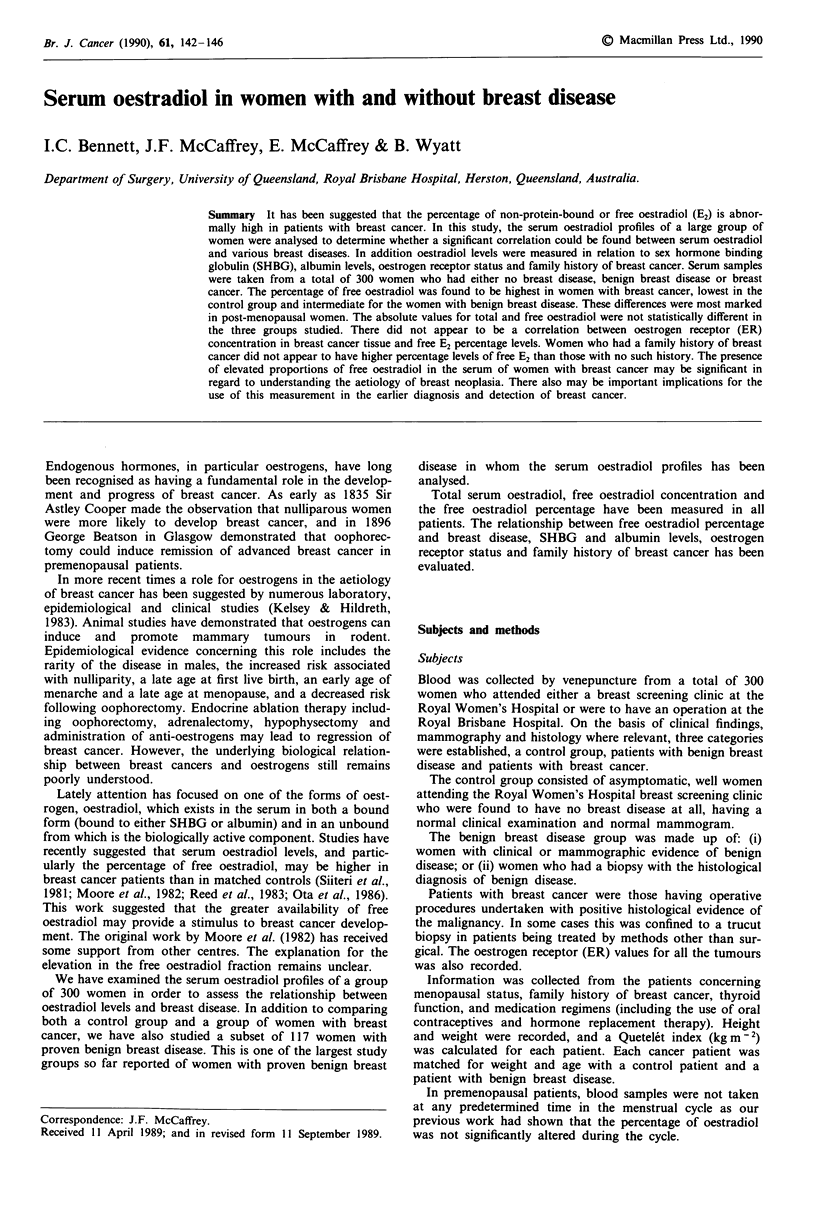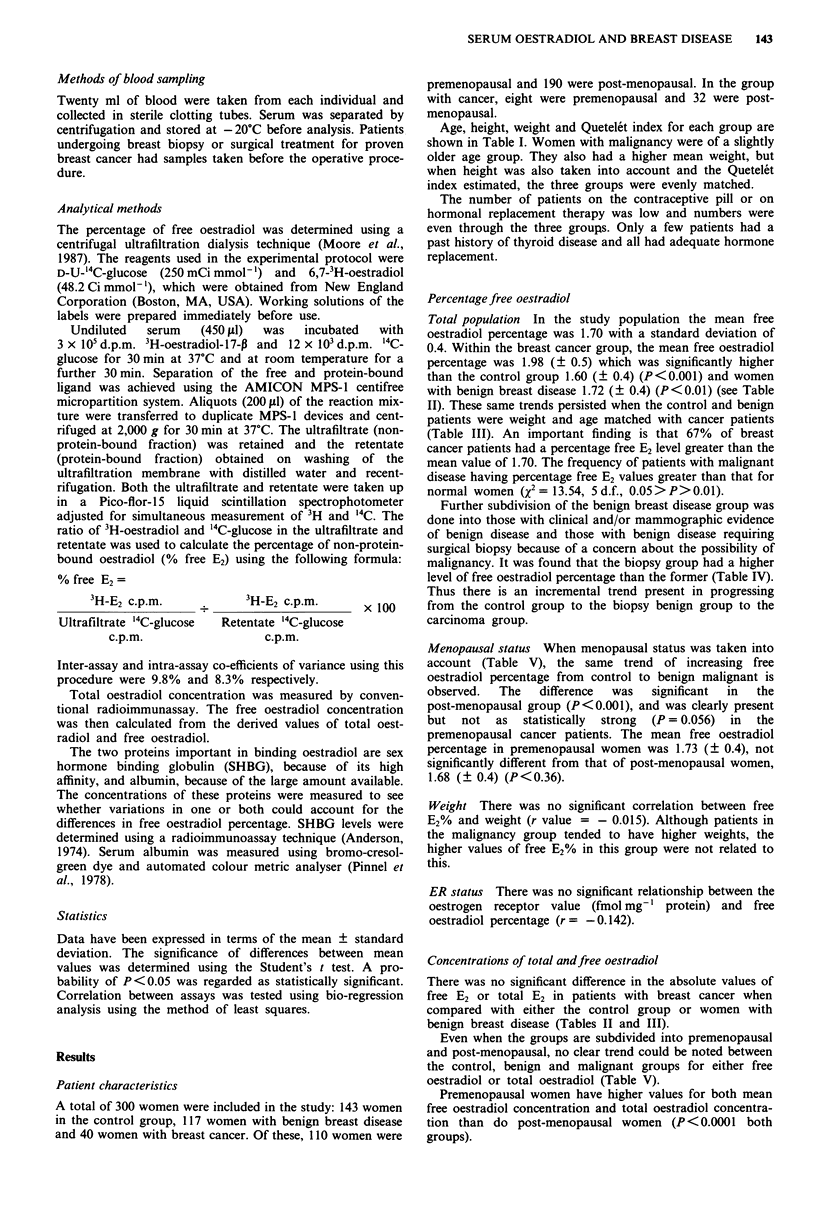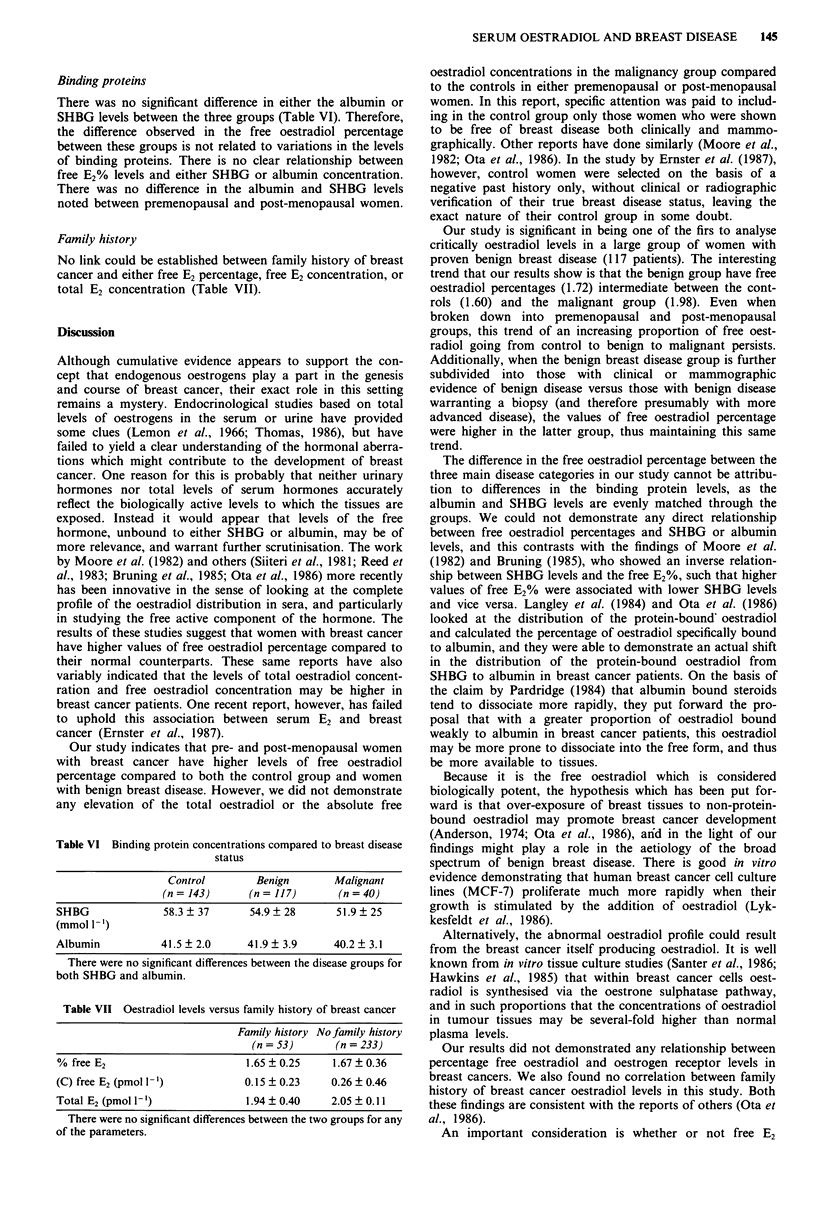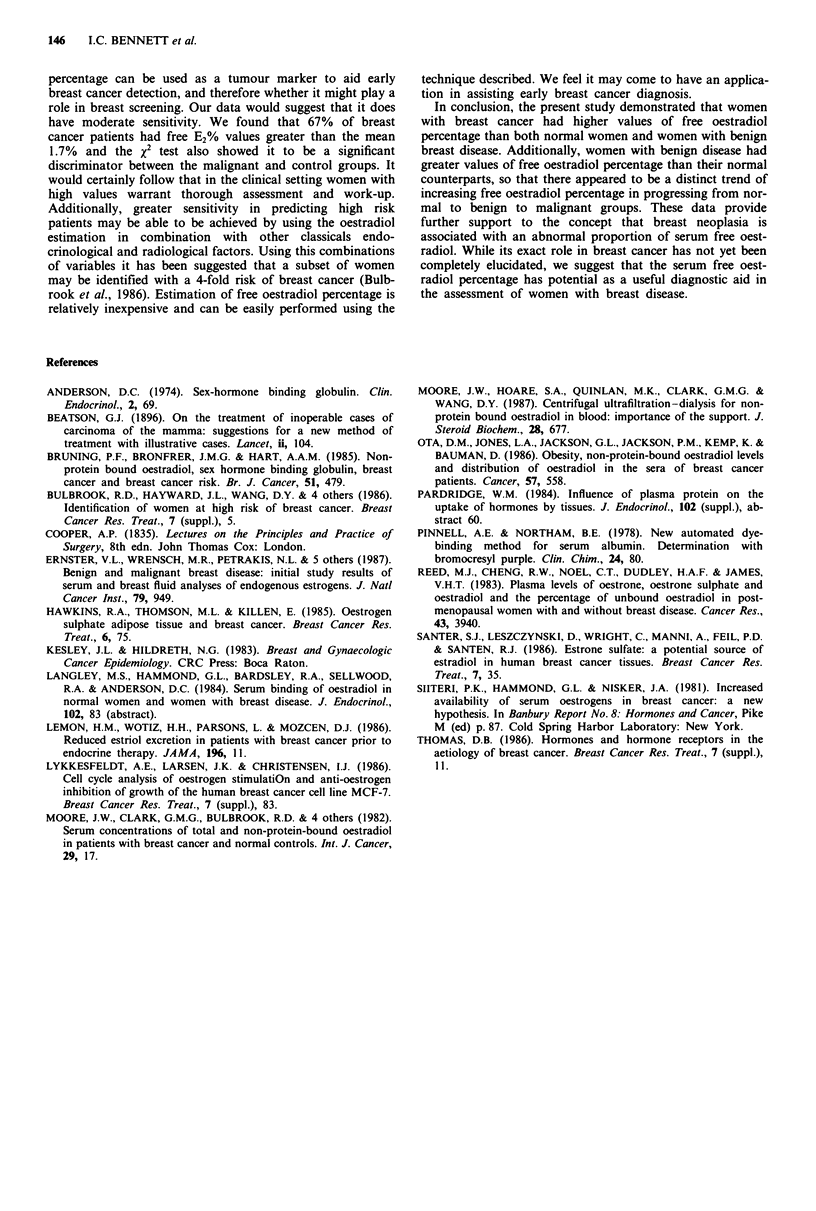Abstract
It has been suggested that the percentage of non-protein-bound or free oestradiol (E2) is abnormally high in patients with breast cancer. In this study, the serum oestradiol profiles of a large group of women were analysed to determine whether a significant correlation could be found between serum oestradiol and various breast diseases. In addition oestradiol levels were measured in relation to sex hormone binding globulin (SHBG), albumin levels, oestrogen receptor status and family history of breast cancer. Serum samples were taken from a total of 300 women who had either no breast disease, benign breast disease or breast cancer. The percentage of free oestradiol was found to be highest in women with breast cancer, lowest in the control group and intermediate for the women with benign breast disease. These differences were most marked in post-menopausal women. The absolute values for total and free oestradiol were not statistically different in the three groups studied. There did not appear to be a correlation between oestrogen receptor (ER) concentration in breast cancer tissue and free E2 percentage levels. Women who had a family history of breast cancer did not appear to have higher percentage levels of free E2 than those with no such history. The presence of elevated proportions of free oestradiol in the serum of women with breast cancer may be significant in regard to understanding the aetiology of breast neoplasia. There also may be important implications for the use of this measurement in the earlier diagnosis and detection of breast cancer.
Full text
PDF




Selected References
These references are in PubMed. This may not be the complete list of references from this article.
- Anderson D. C. Sex-hormone-binding globulin. Clin Endocrinol (Oxf) 1974 Jan;3(1):69–96. doi: 10.1111/j.1365-2265.1974.tb03298.x. [DOI] [PubMed] [Google Scholar]
- Bruning P. F., Bonfrèr J. M., Hart A. A. Non-protein bound oestradiol, sex hormone binding globulin, breast cancer and breast cancer risk. Br J Cancer. 1985 Apr;51(4):479–484. doi: 10.1038/bjc.1985.69. [DOI] [PMC free article] [PubMed] [Google Scholar]
- Ernster V. L., Wrensch M. R., Petrakis N. L., King E. B., Miike R., Murai J., Goodson W. H., 3rd, Siiteri P. K. Benign and malignant breast disease: initial study results of serum and breast fluid analyses of endogenous estrogens. J Natl Cancer Inst. 1987 Nov;79(5):949–960. [PubMed] [Google Scholar]
- Hawkins R. A., Thomson M. L., Killen E. Oestrone sulphate, adipose tissue, and breast cancer. Breast Cancer Res Treat. 1985;6(1):75–87. doi: 10.1007/BF01806013. [DOI] [PubMed] [Google Scholar]
- Moore J. W., Hoare S. A., Quinlan M. K., Clark G. M., Wang D. Y. Centrifugal ultrafiltration-dialysis for non-protein-bound oestradiol in blood: importance of the support. J Steroid Biochem. 1987 Dec;28(6):677–681. doi: 10.1016/0022-4731(87)90397-9. [DOI] [PubMed] [Google Scholar]
- Ota D. M., Jones L. A., Jackson G. L., Jackson P. M., Kemp K., Bauman D. Obesity, non-protein-bound estradiol levels, and distribution of estradiol in the sera of breast cancer patients. Cancer. 1986 Feb 1;57(3):558–562. doi: 10.1002/1097-0142(19860201)57:3<558::aid-cncr2820570326>3.0.co;2-1. [DOI] [PubMed] [Google Scholar]
- Pinnell A. E., Northam B. E. New automated dye-binding method for serum albumin determination with bromcresol purple. Clin Chem. 1978 Jan;24(1):80–86. [PubMed] [Google Scholar]
- Reed M. J., Cheng R. W., Noel C. T., Dudley H. A., James V. H. Plasma levels of estrone, estrone sulfate, and estradiol and the percentage of unbound estradiol in postmenopausal women with and without breast disease. Cancer Res. 1983 Aug;43(8):3940–3943. [PubMed] [Google Scholar]
- Santner S. J., Leszczynski D., Wright C., Manni A., Feil P. D., Santen R. J. Estrone sulfate: a potential source of estradiol in human breast cancer tissues. Breast Cancer Res Treat. 1986;7(1):35–44. doi: 10.1007/BF01886734. [DOI] [PubMed] [Google Scholar]


